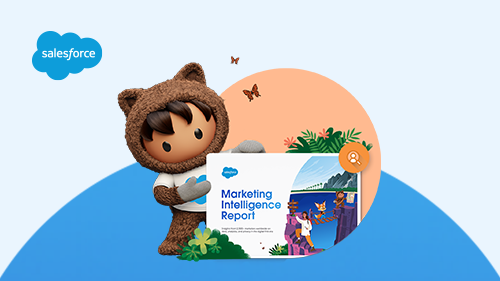3 Winning B2B Marketing Strategies



Business marketing teams that are proactive and use tools to help them prepare for key dates throughout the year have a much better chance of capturing buyers’ attention at the right time. Here are three practical and simple strategies to improve B2B marketing team performance.
Salesforce Staff
When you’re marketing to consumers in the lead-up to key events throughout the year — such as holidays or Christmas — you’re tapping into powerful forces such as the desire for a deal or a great gift. Business-to-business marketers don’t have that advantage.
Instead, B2B marketers need to plan for the fallout from such events when key decision-makers in the buying team have either been non-responsive or completely MIA. When they return to their desks, they’re not necessarily thinking about their next purchase. They’re probably thinking about all the work that’s piled up since they’ve been gone and all the fresh priorities their organisation has mandated.
Don’t let this discourage you. Instead, use this as an opportunity to get proactive: start planning for the key dates throughout the year so you can get a business buyer’s attention before they are heads-down in team meetings or out of the office.
Being proactive would be much harder without marketing automation tools, but the whole point of marketing automation is to raise awareness and nurture demand in the most streamlined and always-on manner. Walk through the following ideas and see how many of them you and your team are already working on, and which ones should be added to the list:
1. Continually develop accuracy across user personas
Some organisations create sample user personas of their key customers early in the launch of their company or a specific offering. That upfront work is laudable, but there’s always a risk that what went into the personas when they were developed is no longer relevant or just plain wrong.
Consider the last few years alone: as we move to hybrid ways of working and embrace a Digital HQ, where your customer works, how they communicate with colleagues and the tools they use have all changed dramatically. So, before you begin any kind of outreach with your audience, take some time to look at the data and analyse the following:
- Customer journey: Based on what you see from marketing automation, are your target personas moving across email, social or other channels in a consistent way, or in the ways you imagined as you set up campaigns? What might have to change?
- History: What kind of conversation activity did you see from landing pages or retargeting campaigns? This is probably monitored in your organisation already, but think about how it connects to the interests and aspirations you weave into your personas, not just where you set up landing pages or place ads.
- Mystery: What are the questions about your personas that you still can’t answer? It may be time to look at how you leverage data from other sources to create a more realistic picture of who your buyers are and how they behave.
5 major trends. Insights from 8,200 marketers. All in one report. Team Earth has landed
Learn more about the global marketing trends disrupting the status quo.



2. A little FOMO can be good in the workplace
The fear of missing out, or FOMO, is something we tend to associate with our personal lives. But it also exists in the workplace: think of the details on competitors or goings-on in a customer’s industry sector that they overlooked during the summer period, for example. There could be research data that could make customers second-guess their yearly plans if they knew about them. There are also events and conferences that, if customers don’t attend to find out what was said, might put them at a disadvantage.
Marketers should not be inflaming or making FOMO worse, of course. Your role is to help customers get caught up on all those potential gaps in their knowledge with the valuable content you serve them. FOMO can help guide and shape B2B marketing planning for everything, from the editorial calendar of your blog to the contents and subject line of your first email newsletter of a new financial year. This doesn’t have to be all new content, either — consider what might have been overlooked in the weeks leading up to key calendar dates.
3. Make marketing goals easy to achieve
The typical goals B2C marketers talk about at key times of the year include losing weight in January or becoming more financially fit from 1 July. Within a B2B marketing setting, organisations might have set their objectives long before, in their end-of-year discussions or performance reviews. Some of the details of those goals, meanwhile, might have filtered into discussions with the sales team, who then put them into the CRM.
Leveraging CRM data from across the organisation — not just your marketing team — can make every contact with your prospect far more relevant and contextualised. Based on what you already know, explore simple tactics that could immediately tie into issues that will be top of mind close to key dates. Some example might include:
- A Twitter chat about strategies to fund core costs
- A webinar on technologies and tactics to improve team collaboration
- A blog post featuring productivity tips from across your entire subject matter expert team.
Plan to market throughout the year
Some tactics described above are merely overtures, of course. Throughout the entire year, B2B marketers will need to focus on keeping the strategic momentum going and continuing to gather and manage data effectively to nurture demand until this time next year.
And if all goes well, the marketers who attract the right kind of attention at the right time will be in a great position to demonstrate how their marketing strategies drive growth and profitability organisation-wide. That should make letting go and enjoying the ebb and flow throughout the year a little easier.
5 major trends. Insights from 8,200 marketers. All in one report. Team Earth has landed
Learn more about the global marketing trends disrupting the status quo.

















